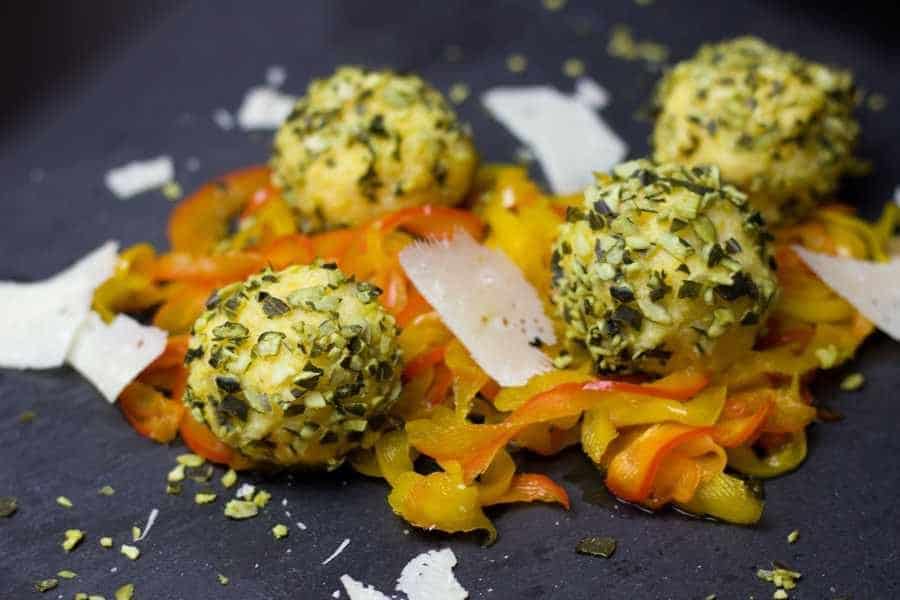Polenta: An Italian Staple

If you have never tried polenta, you may wonder how this yellow substance served in many forms is related to what you consider traditional Italian food. The word “polenta” comes from the Latin word ‘puls’ which is a porridge that comes from a Latin cereal called ‘farro.’ This cereal was the basic diet of Italic people throughout history. As years progressed, traditional polenta became the staple food of Italy due to its availability and versatility. It was originally food to the lower class and eaten by field workers because it was high in energy. Over time, different preparations and alterations have created a variety of flavorful ways enjoy polenta.
Traditional Polenta
Traditionally polenta was made from whatever grains were available, but over time it has transitioned to consist primarily of boiled cornmeal. Depending on the preparation, polenta can be firm and course or creamy and soft. Polenta is sometimes served as a porridge or cooled to solidify into a form that is able to be baked, fried, or grilled. Without any additional flavoring, it is bland and often served as a texture enhancer for meals.
Preparing Polenta
Polenta typically takes one to three hours to cook, depending on the desired texture needed for the meal. Cornmeal flour is poured into boiling salted water in a copper pot and stirred with a hazel stick until the desired texture is reached. The ratio of ingredients is usually cooked three parts water to one part cornmeal. The texture of polenta is usually a thick paste. As a side, it is served immediately. If not served immediately, the paste will stiffen as it cools and be sliced and prepared as needed for the meal.
A Healthy Option
If you are vegetarian or vegan, polenta is a healthy option for your diet. Polenta is gluten-free and high in energy. It is also a good alternative to pasta or mashed potatoes. In preparation, the more finely ground the cornmeal, the creamier it will be. You could also add different spices or cheeses to create your own recipe to compliment a dish. Polenta’s flavor can pair well with medium or red wine.
Italian Variations
In Italian cuisine, there are many variations of polenta.
- Polenta alla Carbonara is a traditional dish of loggers and charcoal burners that is made with cornflour, pork, bacon, and cheese.
- Polenta Taragana is made with cheese and buckwheat flour instead of cornflour which gives it a darker color.
- Polenta Cropa is made with brown flour, then cooked in cream and cheese instead of water.
- Frascatula is made with cornmeal, potatoes, and lard that is hardened into a bread then topped with tomato sauce, cotechino, or sausage, and served with wine.
If you haven’t tried polenta, take the opportunity to try what started Italian cuisine. The ingredients of pasta are fairly similar to some variations of polenta. FFor example, frascatula is prepared similarly to pizza today. Polenta could be prepared many different ways and the flavor opportunities are endless.
If you’d like to try a taste of authentic Italian cuisine for yourself, visit Italian Garden, located downtown in San Marcos, TX.

